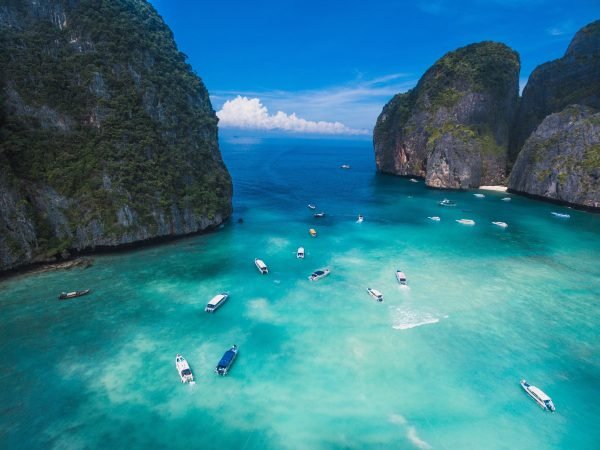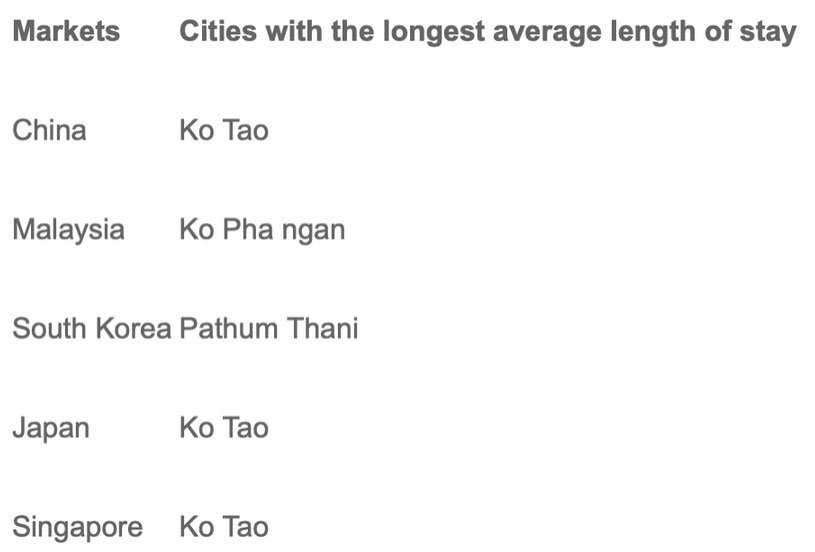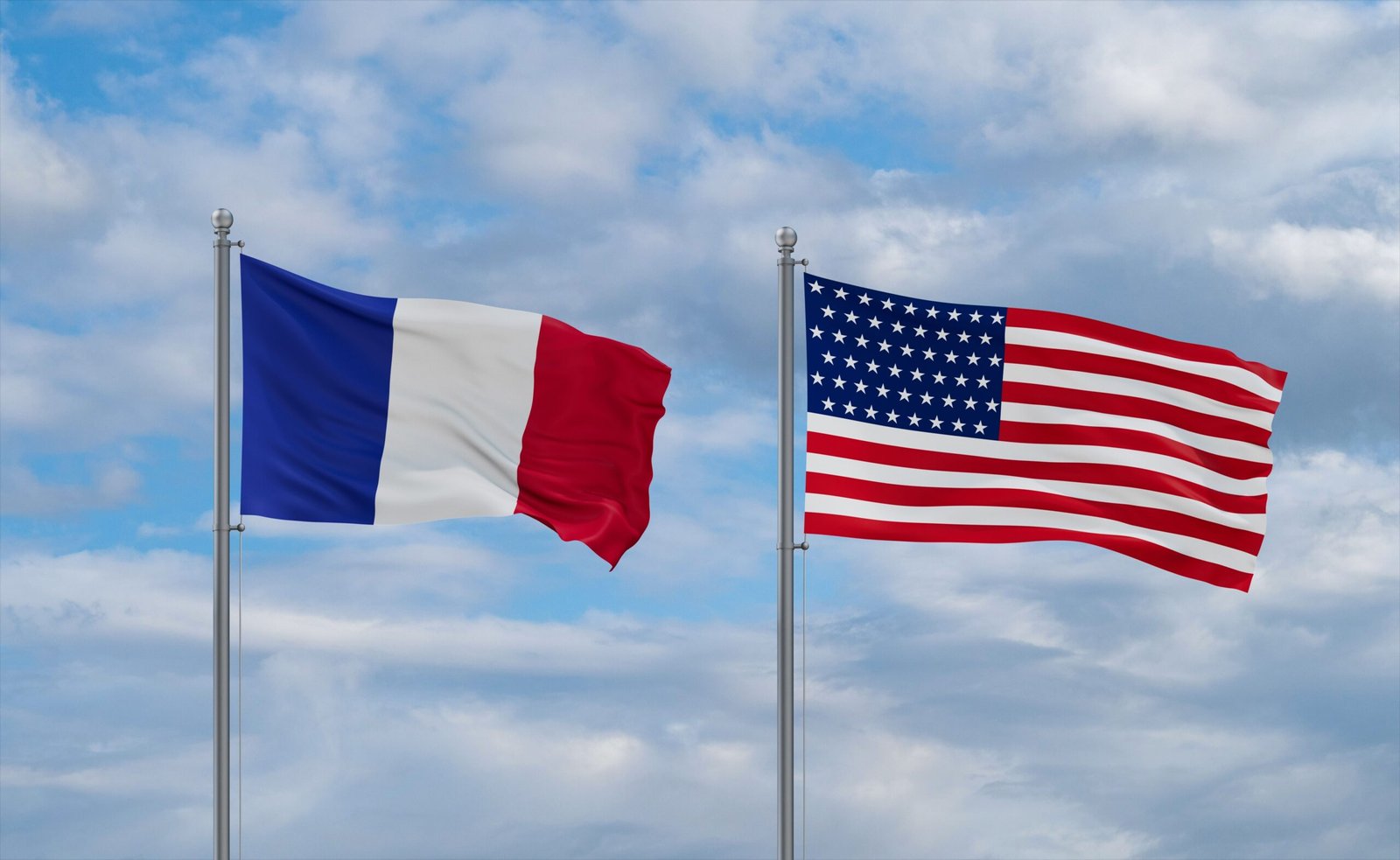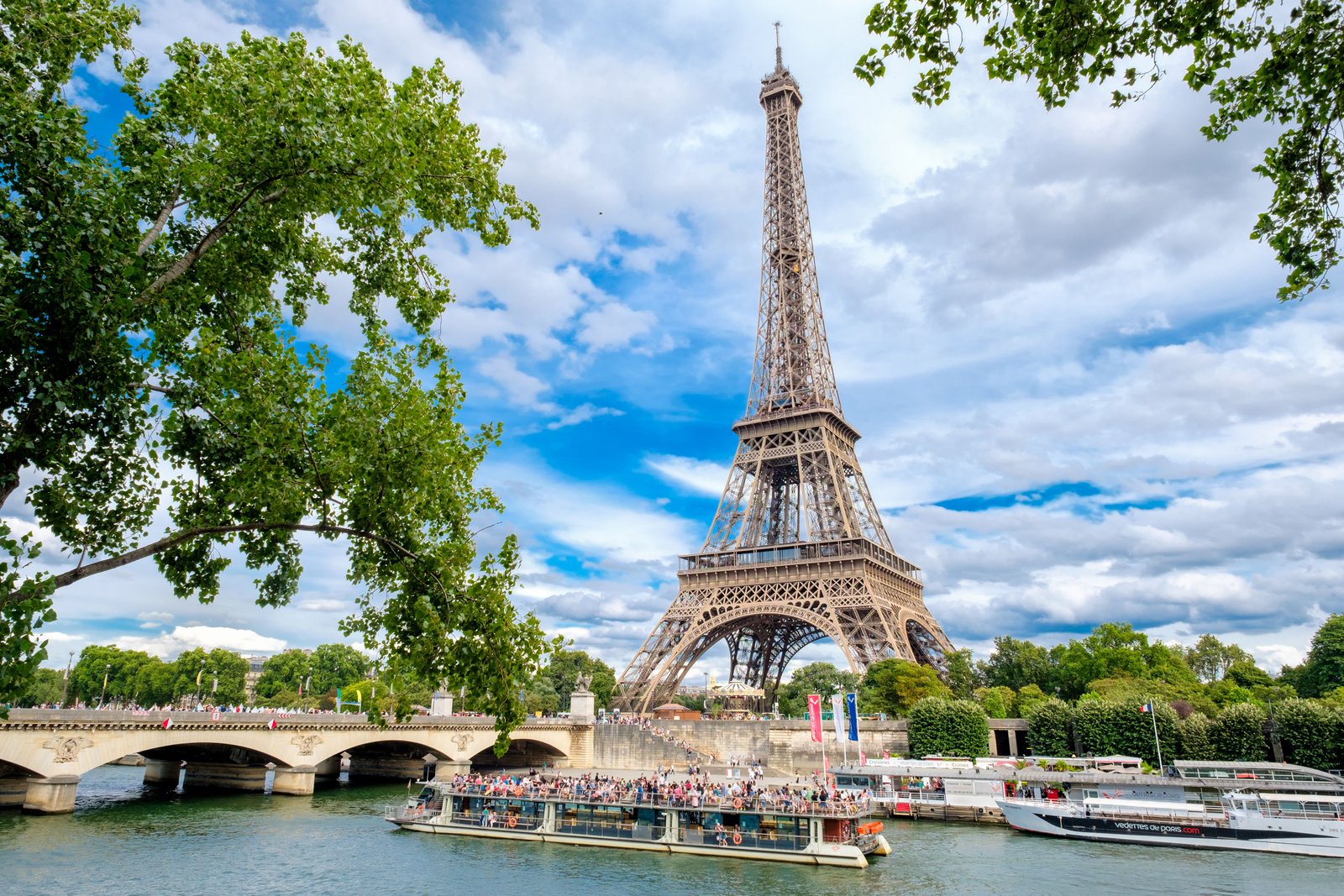Travel Trends
Agoda tracks Thailand’s travel trends

BANGKOK, 30 July 2025: Digital travel platform Agoda reveals fresh insights into the Thai travel landscape for the first half of 2025, identifying the top five source markets.
Based on booking data, China, Malaysia, and South Korea remain the leading markets for visitors to Thailand, followed by Japan and Singapore.

Bangkok, Pattaya, and Phuket continue to top the list of most-visited cities among the five leading markets. Hat Yai also emerged as one of the most visited cities, particularly among Malaysian and Singaporean travellers.
Hat Yai’s growing popularity is likely due to its reputation for affordability, having ranked as the cheapest destination in Thailand and among the top three in Asia for two consecutive years. These destinations offer a mix of urban adventure, coastal leisure, and rich cultural experiences that appeal to a broad spectrum of travellers.
While China tops the list for visitor volume, the supply countries with the highest average stays in Thailand are led by South Korea, followed by Japan, Malaysia, Singapore, and then China.
Additionally, each market shows preferences for where visitors stay longer, with many choosing island escapes for extended visits, such as Ko Tao, famed for its scuba diving, and Ko Pha Ngan, for its mix of laid-back beach life and stays. Pathum Thani province, which neighbours Bangkok, is also a popular destination.
Booking data insights

Alongside Agoda’s data, official figures from Thailand’s Ministry of Tourism and Sports reveal that more than 16 million foreign tourists visited Thailand from January to June 2025, generating approximately THB743.5 million in tourism revenue. With ongoing government initiatives such as the Amazing Thailand Grand Tourism and Sports Year 2025, streamlined travel procedures, and increased flight capacities, Thailand continues to assert itself as a leading destination in the region.
Meanwhile, for Thai travellers heading abroad, Tokyo, Osaka, Hong Kong, Taipei, and Seoul emerged as the leading destinations for the first half of 2025.
Agoda Country Director Akaporn Rodkong shared: “We’re honoured to be the platform of choice for travellers from across Asia and proud to play a role in supporting tourism in Thailand.”
Travel Trends
US tourism demand has withstood Donald Trump's return – but is it the calm before the storm?
It’s been six months since Donald Trump returned to the White House – so what effect has be had on US tourism since January? Gary Noakes investigates.
Travel Trends
Canada Steps Aside As Another Country Joins The Boycott

Canadians are avoiding the United States, and Americans are taking notice. Some of the busiest airports in the world look unrecognizable these days, without Canadian tourists throughout the usually busy summer months. In reaction, certain U.S. states are taking begging to the next level. Vermont, in particular, offered Canadians a free admission deal to various bike parks in early August. In addition, Vermont renamed an entire street to entice Canadians back in while making them feel welcomed.
Despite all the efforts, Canadians are still avoiding the U.S., and this trend is now starting to show up in other countries as well. One European country in particular is scaling back from U.S. travel.
From a Facebook group to an app, this European country has also seen a decrease in travel to the U.S. in recent months.
Here’s a closer look at the country in question, and what the numbers are saying.
French Tourists Are Turning Their Backs To Commonly Visited Areas Like California
It has been well documented that Canadians are avoiding the United States. Month after month, travel trends continue to decline compared to the previous year in 2024. However, the boycott extends far beyond Canada and also encompasses Europe.
In fact, according to recent data, Europeans are choosing Canada instead of the U.S. Travelers from the UK, Germany, and France are now opting for Ontario instead of America. When asked about future destinations, 64% of Europeans had an interest in visiting Canada, along with 54% approving a visit to Ontario.
As for the United States, the country dropped all the way down to 46%, just ahead of Japan and Australia, which also continue to trend upward among European travel interests.
Canada is listening to these trends, expanding its international routes.
However, Canada isn’t the only country making moves to avoid the United States. Dating back to early 2025, France has also made significant moves that indicate it’s headed in a similar direction.
From apps to Facebook groups, France is also advocating reducing travel to the U.S. This movement dates back months. In early 2025, a Facebook user launched the group, “Boycott USA, Buy French and European!”
According to CTV News, the group attracted 20,000 members online in just two weeks. Additionally, locals in France are also using an app to detect products from the United States. With the app, customers can sidestep American products and solely focus on European or homemade items instead.
What The Numbers Are Saying?
The numbers also reflect the key changes currently taking place. According to the travel agency Voyageurs du Monde, French tourists are losing interest in tourism in California, as well as in parks in Arizona. The decline in sales has led to a reduction of at least 20%.
Jean-François Rial, Voyageurs du Monde manager, said in a statement:
“For political reasons, it’s rare. People are flocking to Canada and Mexico.”
Other French travel agencies have reported an 11% decrease in U.S.-related travel, all triggered by government changes in America. Travel agencies in France claim that things are at a standstill due to inexperienced travelers being sensitive to the current content related to the United States.
Along with French tourists taking a stand, the government of France has also issued stricter warnings for travel to the United States in recent months.
France Has Strengthened Its Stance On Boycotting The United States With Tighter Travel Advisories
USA and France flags waving together in the wind on blue cloudy sky
France has issued key advisories for travel to the United States.
The concerns include alerts on:
- Political climate
- Potential natural disasters
- Ongoing demonstrations
Demonstration warnings were issued for downtown Los Angeles, Paramount, and Compton in response to prior events.
The French government is also asking visitors to the United States to be aware of the new Visa requirements. The U.S. government announced a new “integrity fee” that is looming closer. This may shift tourism even further away from the United States, with yet another fee for foreign travelers.
The U.S. Department Of State Has Issued Travel Advisories Of Its Own For France
On the contrary, the U.S. Department of State has upped its warning for travel to France. The current advisory is under a “Level 2: Exercise Increased Caution.” The advisory bump is due to increased terrorism and civil unrest.
The Department of State wrote that theft, such as pickpocketing, is widespread in France.
“Pickpocketing and phone thefts are common, especially in crowded places. Terrorist groups continue to plan possible attacks in France and may attack with little to no warning. There are also regular, peaceful protests and strikes in Paris and other cities throughout France.”
The Eiffel Tower and cruise boats on the River Seine on a summer day in Paris, France
The Department of State added advisories on which areas American travelers need to beware of pickpocketing scenarios.
|
Common Areas Of Pickpocketing In France, According to the U.S. Department Of State: |
|---|
|
Airports |
|
Subways and Train Cars |
|
Tourist Attraction Areas |
|
Train Stations |
The number of Americans visiting France has not dipped and, according to reports, actually increased in 2025 by 3% compared to last year, 2024. For now, the opposite isn’t true for French tourists visiting the U.S.
Be sure to let us know your thoughts on France’s boycott of the United States. Will these boycotts last? Chime in down below.
Travel Trends
Luxury travel is being redefined by younger consumers shifting regional wealth hubs, says WATG

Millennials are leading the ‘bleisure’ (business and leisure) travel trend, blending work with holidays
Gen Z seek immersive, transformative experiences that challenge traditional luxury travel
High Net Worth Individuals in the APAC region spend the most on five-star hotels, compared to other regions.
India’s affluent class is projected to grow from 60 million to 100 million by 2027
The luxury travel market is being reshaped by shifting regional wealth hubs and new generations of consumers, according to a new report.
Architectural firm WATG’s research division has released Evolving Wealth: A New Paradigm for Luxury Travel, which outlines the ways the luxury hospitality sector is changing.
New centres of wealth are redefining the global map of luxury demand. The US and China remain dominant luxury seekers, with 80 per cent of China’s new wealthy consumers being under 50 years old.
India’s affluent class is projected to grow from 60 million to 100 million by 2027 and the Gulf nations are forecast to see a 150 per cent increase in centi-millionaires by 2028.
Southeast Asia and Africa are also seeing a new wave of luxury travel seekers.
By understanding the new luxury travel trends, hospitality facilities can be designed to resonate with these consumers.
The market
Using consumer research, the authors estimate the value of global luxury travel in 2024 was US$219 billion (€189 billion, £165 billion), surpassing pre-pandemic levels and driven by a rise in demand for bespoke top-tier experiences.
The total luxury market, including goods and services, is worth approximately US1.54 trillion (€1.33 trillion, £1.16 trillion). Citing a recent McKinsey study, the research highlights a drastic increase in demand for luxury experiences among Gen Z (52 per cent) compared to only 29 per cent of Baby Boomers. Experiences have more value to younger generations than possessions.
Demographic trends
The demographics and behaviours of luxury consumers are changing, which WATG says should serve as a reminder that serving a one-size-fits-all hospitality model won’t work.
According to data by Cerulli Associates, in the US alone, a US$84 trillion (€73 trillion, £63 trillion) intergenerational family wealth transfer is underway. This is accelerating the spending power among Gen X, Millennials and Gen Z, who already represent a growing share of high net worth individuals.
While Baby Boomers still represent 80 per cent of luxury spending power, younger generations are catching up and their priorities appear to be experiences that promote sustainability, personalisation and immersive cultural trips.
For example, 38 per cent of luxury seekers are willing to pay 30-50 per cent more for sustainable travel features. Gen Z is also driving digital nomadism – moving between global cities such as Miami, Dubai and Singapore.
Millennials are leading the ‘bleisure’ (business and leisure) travel trend, blending work with holidays. This is leading to an increase in demand for long-stay accommodation types that cater to remote working combined with relaxation.
Gen Z seek novelty and self-discovery, according to the authors. They say the industry is evolving to offer immersive, transformative experiences that challenge traditional luxury travel, for example, deep sea exploration and high altitude treks.
Luxury consumer wealth demand drivers
The growth of the luxury travel market is being driven by the increase in the number of millionaires and high net worth individuals around the world. WATG says these consumers seek novelty, culture, history and authentic experiences.
WATG has categorised these:
•Aspiring luxury/ mass affluent
These people are financially secure, often made up of professionals, entrepreneurs or those with dual-income household assets with a value of between US$100,000 (€86,500, £75,300) to US$1 million (€865,000, £753,000).
They represent 35 per cent of the luxury travel market, spend selectively on luxury and prioritise premium experiences while remaining value-conscious.
WATG says these consumers may look for more heavily-branded luxury experiences to validate their decision to splurge on a premium experience.
This cohort is expected to replace the middle class as growth drivers in the coming decade. They will prioritise travel over other forms of discretionary spending.
•Millionaires next-door
These people live more frugally, below their means, despite their assets being worth US$1-5 million (€865,000-4.3 million, £753,000-3.8 million). They often reside in middle-class neighbourhoods and their purchasing priorities include quality, longevity as well as discreet luxury experiences. WATG says these consumers are key customers for well-designed premium hospitality with substance.
•High net worth individuals
These people, with wealth amounting to US$5-30 million (€4.3-26 million £3.8-22.6 million), seek top tier travel experiences and are key players in the global luxury economy. Key growth markets for this population are growing in Asia, the Middle East and North America.
•Ultra high net worth individuals
Those with net worth exceeding US$30m (€26 million, £22.6 million), this group represents less than 1 per cent of the global population but has a disproportionate effect on luxury markets. They are known for distinctive demands and seeking rare, hyperpersonalised and private experiences.
Hospitality
Real estate information company CoStar says the number of available global luxury rooms could reach 1.9 million in 2030, up from 1.6 million in 2023.
The authors of the report say the cost of luxury hotel suites has increased globally by 9.2 per cent and HNWIs in the APAC region spend the most on five-star hotels, compared to other regions.
To read the report, click here.
-

 Brand Stories2 weeks ago
Brand Stories2 weeks agoBloom Hotels: A Modern Vision of Hospitality Redefining Travel
-

 Brand Stories1 week ago
Brand Stories1 week agoCheQin.ai sets a new standard for hotel booking with its AI capabilities: empowering travellers to bargain, choose the best, and book with clarity.
-

 Destinations & Things To Do2 weeks ago
Destinations & Things To Do2 weeks agoUntouched Destinations: Stunning Hidden Gems You Must Visit
-

 Destinations & Things To Do1 week ago
Destinations & Things To Do1 week agoThis Hidden Beach in India Glows at Night-But Only in One Secret Season
-

 AI in Travel2 weeks ago
AI in Travel2 weeks agoAI Travel Revolution: Must-Have Guide to the Best Experience
-

 Brand Stories1 month ago
Brand Stories1 month agoVoice AI Startup ElevenLabs Plans to Add Hubs Around the World
-

 Brand Stories3 weeks ago
Brand Stories3 weeks agoHow Elon Musk’s rogue Grok chatbot became a cautionary AI tale
-

 Asia Travel Pulse1 month ago
Asia Travel Pulse1 month agoLooking For Adventure In Asia? Here Are 7 Epic Destinations You Need To Experience At Least Once – Zee News
-

 AI in Travel1 month ago
AI in Travel1 month ago‘Will AI take my job?’ A trip to a Beijing fortune-telling bar to see what lies ahead | China
-

 Brand Stories2 weeks ago
Brand Stories2 weeks agoContactless Hospitality: Why Remote Management Technology Is Key to Seamless Guest Experiences



You must be logged in to post a comment Login